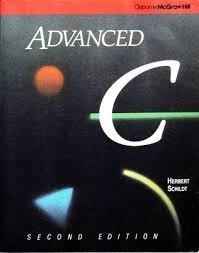Advanced C
Select Format
Select Condition 
You Might Also Enjoy
Book Overview
Experienced C programmers can become professional C programmers with Schildt's nuts-and-bolts guide to advanced programming techniques. Covers the new ANSI standard in addition to the Kernighan and Ritchie C used in the first edition. This description may be from another edition of this product.
Format:Paperback
Language:English
ISBN:0078813484
ISBN13:9780078813481
Release Date:January 1988
Publisher:McGraw-Hill Osborne Media
Length:414 Pages
Weight:1.62 lbs.
Dimensions:1.0" x 7.4" x 9.1"
More by Wee Society
Customer Reviews
0 customer rating | 0 review
There are currently no reviews. Be the first to review this work.


















































